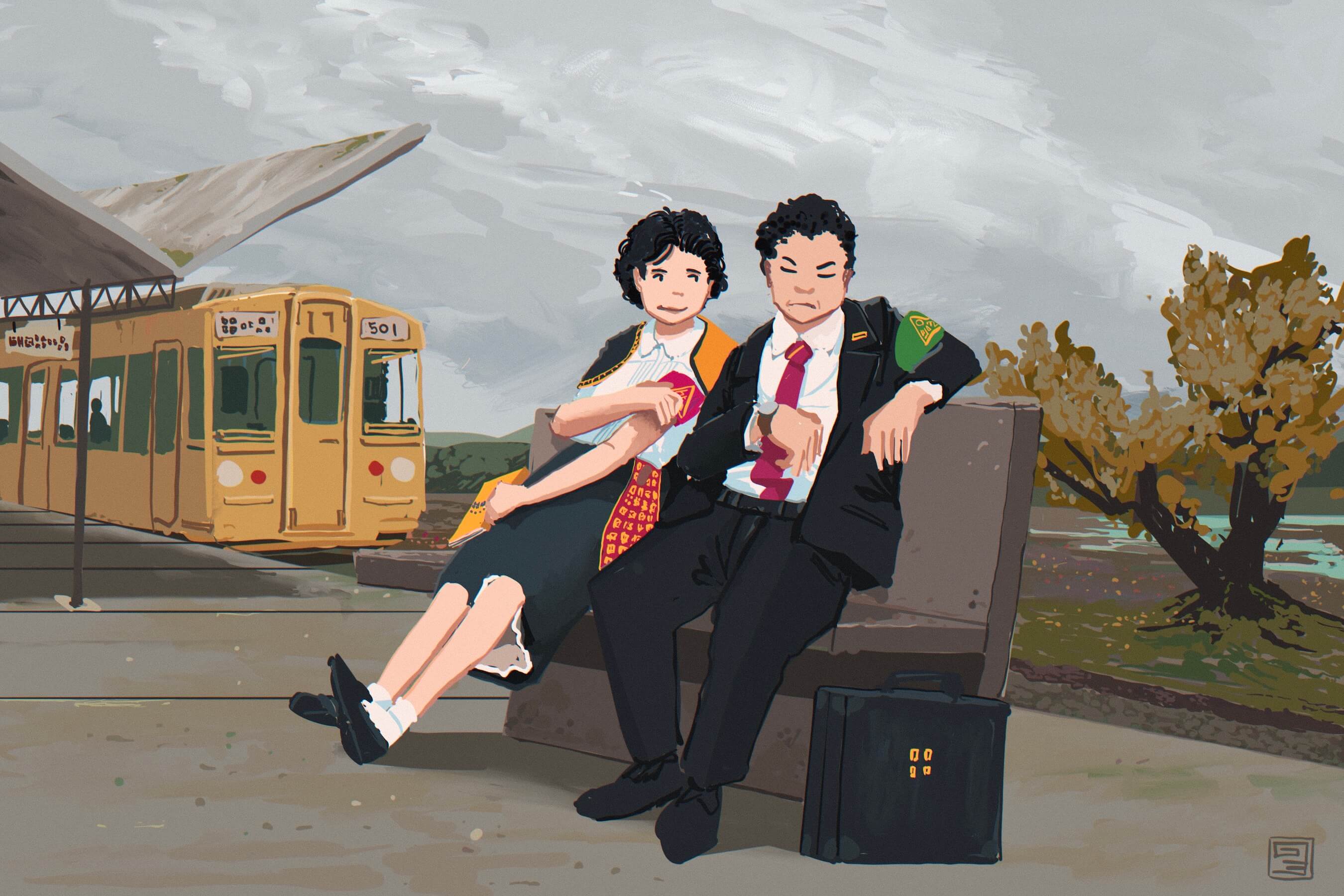NEW Story: School Photo
The Borough of Krafla

Table of Contents
Overview #
This article is about a borough of Vekllei
The borough of Krafla is an administrative region in the north of Vekllei, located in the Lava Region around the Joskuslsa river, north of Lita and south of Kotaismoyeh. The town of Krafla makes up part of a belt of borough capitals along the banks of the Joskuslsa river, formed by glacial runoff from the Vatnayoskusl glacier. It is a sparsely-populated and agricultural borough, and most notable as the site of Vekllei’s first hydroelectric power plant, which was destroyed in the Krafla Dam Disaster in 1911.
Tzipora sits at an in-between station and she understands this. This is what makes Vekllei National Rail so smart, she thinks. There is a direct, tragic parallel between the collapse of the Ford Motor Company and why she is waiting forty five minutes for the steam train to the village of Vos.
Etymology #
Krafla is named after the petty demon Fismiosn Krafla mentioned in the Saga of Origins and Saga of New Earth. The demon was murdered by the Early God Vis for his planned coup of the First Palace. Krafla was buried in the far west of the current borough boundary, deep beneath the Hagsoraefi Lava Fields.
History #
Some of the boroughs, they just sort of made up, didn’t they?
– Tzipora Desmoisnes
Like many of Vekllei’s interior boroughs, Krafla’s origins are agricultural. It is named after the demon Fismiosn Krafla, vanquished in the Saga of New Earth in Upen mythology. Until the 19th Century, Krafla was inhabited by a handful of farming settlements and seminomadic Algic tribes. Fording the Joskuslsa river was rare until borough unification, and settlements either side of the river were largely isolated. By the 17th Century, most permanent settlement east of the Joskuslsa had died out.
Krafla was insulated from Christianisation of northern Vekllei in the 15th and 16th Centuries, and has been dominated by Algic Upenist beliefs since its earliest recorded settlement in the 4th Century.
In 1911, the Krafla Hydroelectric Dam collapsed, washing away much of Krafla’s downstream riverside township and killing nearly half the population of the town. Krafla was rebuilt at a higher elevation.
The borough remained heavily agricultural up until the Atomic War, comprising mostly of traditional co-operative farms.
In the Floral Period, life in Krafla remains agrarian, but the borough does attract some regional tourism as a thoroughfare into the deeper highland interior.
Geography #
Krafla is extremely flat, glacial and dominated by lava fields. Snow settles across its wide basalt plains and contributes to seasonal melting that feeds into the Joskuslsa River. Krafla has extraordinarily fertile soil, and its satellite farm towns of Krafla-Vis and Voya Vema are dominated by centuries-old farming communities. The ‘Borough Town’ of Krafla resembles a moonscape.
Old Kralfa Ruins #
Krafla’s historic agricultural community, including several large stone structures, were swept away in the 1911 Krafla Dam Disaster. The dam collapse flooded the town, killing 48 people. Most of the town was not rebuilt. The ruins of the larger stone structures are still visible in winter.
Hagsoraefi Lava Fields #
The Hagsoraefi Lava Fields are part of the patchwork of glacial igneous highlands stretching through Vika, Lava, and western Lumiousniya. Recognised by its huge basalt moonscapes and mossy tundra, the Fields dominate the landscape of Krafla and its towns.
Joskuslsa River #
The Joskuslsa River, Vekllei’s second-longest river, flows through Krafla. It is the source of major flooding in the low-lying areas of West Krafla, and features several canyons leading up to the Three Crown Falls in neighbouring Kotaismoyeh.
The river is a discharge of the Vatnajoskusl ice cap, and is a fast-flowing glacial river with the highest flow in the country. It is bridged in Krafla by the New Oak Bridge, which was constructed in 1952.
Empty Basins Crown Land #
“Vosa Vema,” said the King. And he struck Fismiosn Krafla with a spell of terror. And his blood nourished the Earth for all the creatures to see.
– Retelling of Algic legends, Verse 880, Saga of New Earth
In the highlands on the far side of the Joskuslsa river are Krafla’s mysterious “empty basins,” unique geological formations that appear as shallow craters. They are covered by a layer of basalt crust, and are likely much deeper than they appear. The slopes of the basins are flush with flora and fauna, and the deepest of them, called “Fismisosndera,” features a small lake at the bottom.
Infrastructure #
Krafla is dependent on its arterial M224 highway and regional rail connections. As part of the agricultural belt in the north glacial lava fields, Krafla lacks heavy industry or the presence of bureau commerce. It is a traditional borough characterised by Vekllei co-operative (socialistzesm) farms and minor regional tourism.
Seispri Vis Inn #
The Seispri Vis Inn is a traditional Mosesm-style Inn in the centre of Krafla, one of the oldest in the Lumiousniya region. Founded in 1673, it was damaged in the Krafla Dam Disaster and closed for several years. After reopening in 1919, Seispri Vis found great success catering to the late Junta fascination with rural recreation, and is renowned regionally. It is currently maintained by the Bousmiosn family.
Krafla High-Energy Communications Tower #
* smallimg](/images/basecamp.jpg)
The Krafla High-Energy Communications Tower was constructed by the Commonwealth Telecom Directorate in 2028 to improve electric switchboard service in Vekllei’s north-east. An old-fashioned mast radiator design, the guyed tower radiates vertically polarised radio waves that service most of the Home Islands.
The Krafla HET makes up part of the low-frequency emergency radio network, and contributes to the communications redundancy measures of the Home Islands.
Krafla Pipe Company #
The Krafla Pipe Company is the oldest operating pipe manufacturer in Vekllei, founded in 1824 by Sosm and Gosfyosd Hosmasnsson. It is contracted by the Krafla Agricultural Municipality to provide irrigation supplies to the region.
Towns #
- Krafla
- Krafla-Vis
- Voya Vema